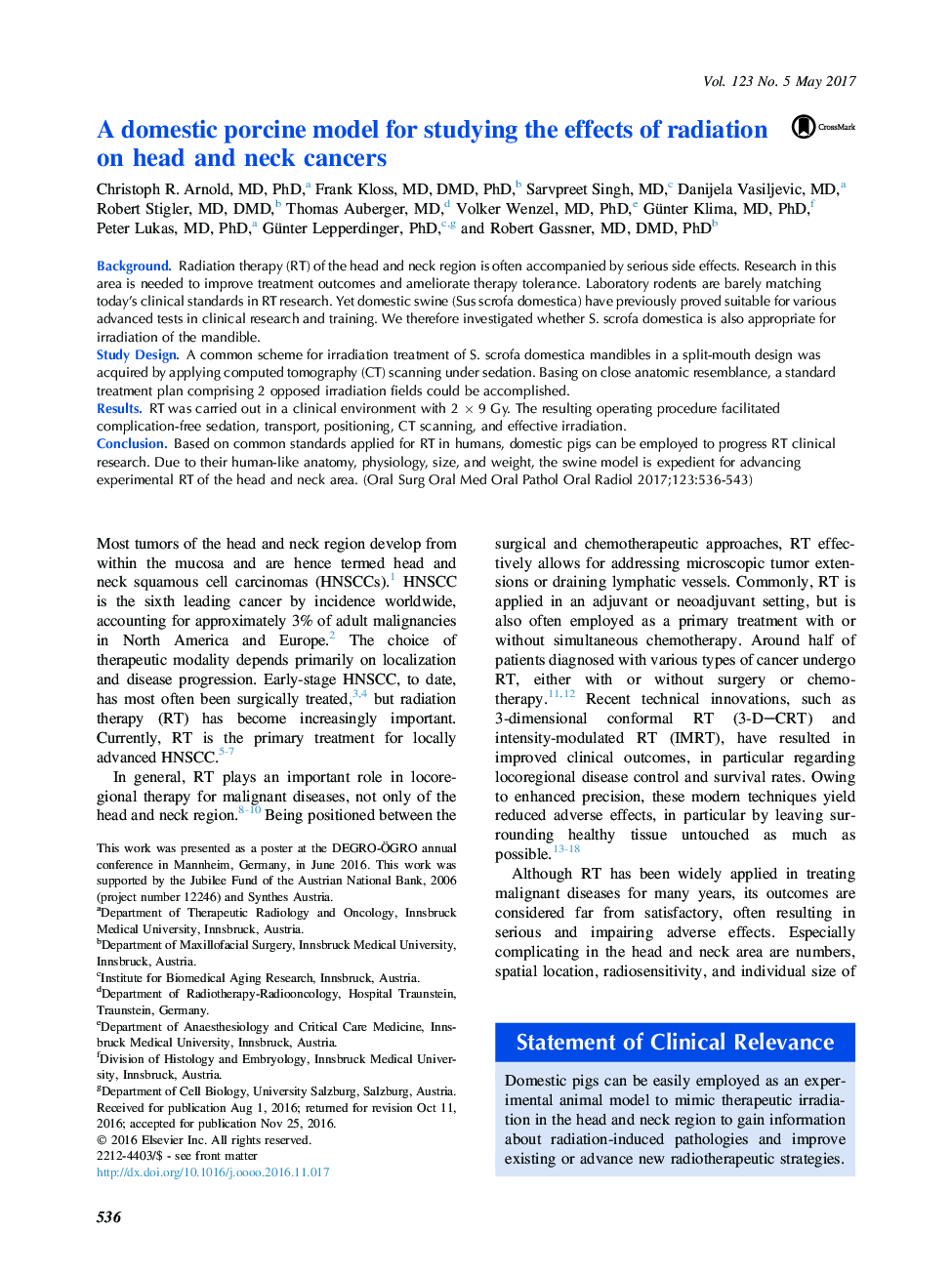| Article ID | Journal | Published Year | Pages | File Type |
|---|---|---|---|---|
| 5643184 | Oral Surgery, Oral Medicine, Oral Pathology and Oral Radiology | 2017 | 8 Pages |
BackgroundRadiation therapy (RT) of the head and neck region is often accompanied by serious side effects. Research in this area is needed to improve treatment outcomes and ameliorate therapy tolerance. Laboratory rodents are barely matching today's clinical standards in RT research. Yet domestic swine (Sus scrofa domestica) have previously proved suitable for various advanced tests in clinical research and training. We therefore investigated whether S. scrofa domestica is also appropriate for irradiation of the mandible.Study DesignA common scheme for irradiation treatment of S. scrofa domestica mandibles in a split-mouth design was acquired by applying computed tomography (CT) scanning under sedation. Basing on close anatomic resemblance, a standard treatment plan comprising 2 opposed irradiation fields could be accomplished.ResultsRT was carried out in a clinical environment with 2Â ÃÂ 9Â Gy. The resulting operating procedure facilitated complication-free sedation, transport, positioning, CT scanning, and effective irradiation.ConclusionBased on common standards applied for RT in humans, domestic pigs can be employed to progress RT clinical research. Due to their human-like anatomy, physiology, size, and weight, the swine model is expedient for advancing experimental RT of the head and neck area.
